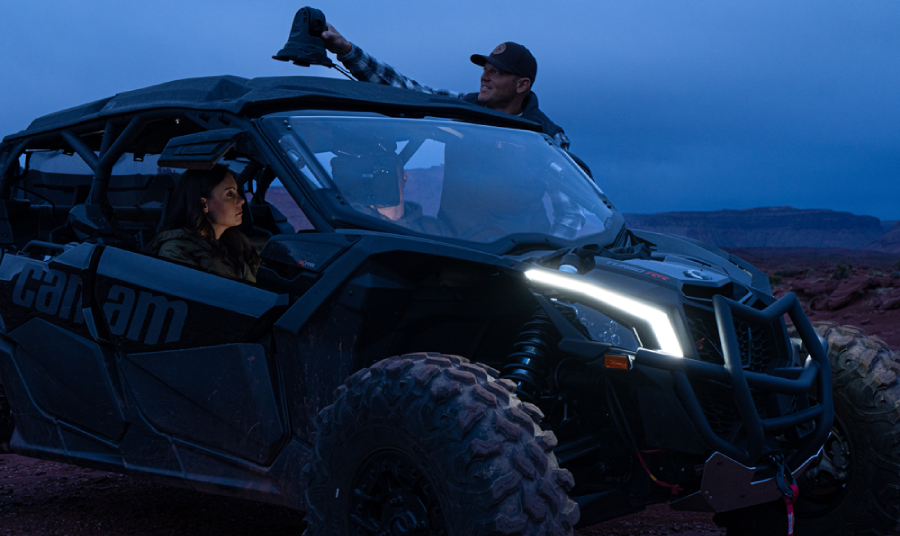Introduction
Night predator hunting can be both challenging and rewarding. While the cloak of darkness offers predators a natural advantage, the advent of advanced technology especially in the realm of thermal vision can level the playing field for hunters who are willing to trek out at night. Specialized equipment, such as thermal imaging cameras like the D30 Defiance, can reveal the hidden movements of even the wiliest of predators.
Understanding Predator Behavior
Predators such as coyotes and bobcats are primarily nocturnal, with peak activity occurring during the early morning and late evening hours. Prime hunting locations include areas where food sources are abundant, such as near water sources, livestock pens, or crop fields. Factors such as weather conditions and moon phases also play a significant role in predator movement. For instance, predators are more active during new moons when the night is darkest, and their movements may be more predictable during periods of stable weather. While predators have to feed every day, some hunters believe they seem to notice when the night is darkest, and become emboldened by cloudy nights which better obscure them from their prey.
Essential Gear for Night Predator Hunting
Thermal imaging technology is at the forefront of night hunting gear. It works by detecting heat signatures emitted by animals, allowing hunters to see clearly in complete darkness. The benefits are immense, providing not only the ability to detect predators at long distances but also enhancing safety by preventing accidental targeting of non-predatory animals such as cattle, sheep, or dogs, which may be easily mistaken for coyotes if one is not using the sharpest imaging devices.
When selecting firearms and ammunition, consider the specific predator and the environment. Be aware of your own capabilities and those of your rifle, as you will want to pick a setup that is capable of both great range and accuracy. Hearing protection is often overlooked but essential, as the quiet of the night amplifies sounds, making gunshots more jarring. Finally, appropriate clothing and footwear are vital for comfort and concealment. While camouflage patterns aren’t as important for nocturnal hunting as they are during the day, it’s still important to select dark-colored weather-appropriate attire that blends into the environment.
Calling Tactics for Night Hunting
Effective calling is an art that varies with the predator species. Coyotes, for example, respond well to distress calls of prey animals, while bobcats are often lured by bird calls. The timing and frequency of calls are critical; too much calling can make predators wary, while too little might not attract them at all. Understanding predator responses to calls can significantly increase your success rate. Electronic calls offer the advantage of varied sounds and volume control, whereas mouth calls provide a more hands-on, customizable approach.
Shooting from Vehicles
Hunting from vehicles such as side-by-sides, pickup trucks, and SUVs offers both mobility and a strategic vantage point. When choosing a shooting location, consider the terrain and the presence of natural cover to remain concealed. Opening windows can reduce the noise impact of firearms and minimize hearing damage. Additionally, maintaining a clear shooting lane free of obstructions ensures accurate targeting. Ensure your vehicle is positioned to take advantage of wind direction, preventing your scent from alerting predators. It should go without saying that engine noise and headlights could scare away potential prey. With the Dark 30 Defiance, however, as long as your key is in your vehicle, the engine will be off, but the battery will still be able to power your thermal device.
Shooting Techniques
Zeroing your firearm for night shooting is essential to ensure accuracy. Practice shooting in low-light conditions such as after sunset to familiarize yourself with the different dynamics compared to daytime shooting. Ethical shot placement is crucial; aim for vital areas to ensure a quick, humane kill. Regular practice will improve your accuracy and confidence, making you a more effective hunter.
Safety First
If you’re hunting with a partner, he can provide assistance in case of emergencies and help keep an eye on your surroundings, covering sectors of fire that you cannot. Carry essential emergency gear, such as first aid kits, flashlights, and communication devices. Always respect wildlife and landowners, following all regulations and guidelines to ensure a sustainable and respectful hunting experience.
In summary, successful night predator hunting requires a combination of understanding predator behavior, utilizing advanced gear, and employing effective tactics. By following the tips outlined in this article, hunters can experience the thrill and rewards of nighttime hunting. With the right preparation and mindset, night predator hunting can become a highly rewarding pursuit.
Frequently Asked Questions
Q: What are some prime hunting locations for predators?
A: Prime hunting locations include areas near water sources, livestock pens, or crop fields where food sources are abundant.
Q: What is the essential gear for night predator hunting?
A: Thermal imaging technology, appropriate firearms and ammunition, hearing protection, and camouflage attire are essential for night predator hunting.
Q: What are some effective calling tactics for night hunting?
A: Effective calling varies with the predator species, with coyotes responding well to distress calls and bobcats being lured by bird calls.
Q: How can understanding predator behavior improve hunting success?
A: Understanding predator behavior such as peak activity times and movement patterns can significantly increase hunting success.
Q: Is shooting from vehicles a recommended practice for night hunting?
A: Hunting from vehicles should be done cautiously and within legal regulations to ensure safety and ethical hunting practices.

